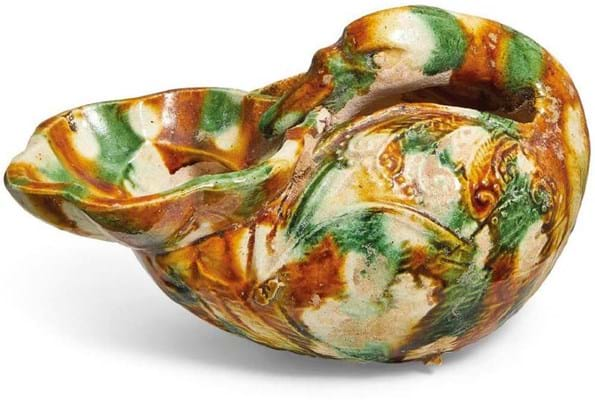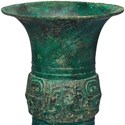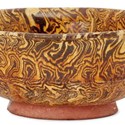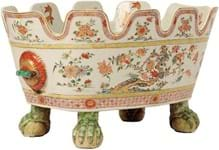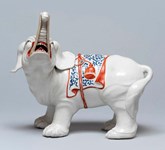A Western Zhou dynasty (1045-771BC) ritual wine vessel (zun) decorated with two taotie masks and two pairs of confronting dragons was used for making offerings during religious ceremonies or ancestral rituals.
The inscription to the interior of this vessel consists of a clan sign followed by fu yi – a dedication to Fu Yi (Father Yi). Bought from Janssens in 2002, it had expectations of £50,000-80,000 but sold a little short of this at £42,000.
A late Shang dynasty ritual food vessel (Yu) had been acquired from Janssens the following year. These Bronze Age vessels were popular during the Yinxu period (13th-11th centuries BC) with excavated examples suggesting that this particular type, with rounded protrusions emanating from a diamond cartouche, hails from Shaanxi province. It took £40,000.
More competition emerged for some of the early ceramics. For example, a 5in (12cm) Tang dynasty (618-907) sancai-glazed rhyton shaped as a recumbent goose with its neck arched back over its body took £20,000 (estimate £2000-3000), while a Tang marbled-pottery bowl, 4in (10cm) diameter, made £8500 (estimate £4000-6000).
Zoomorphic ‘rhytons’ such as this (similar vessels are formed as parrots) are thought to have been inspired by Sassanian metalware prototypes. Their exact purpose is unclear, though they may have been used as oil lamps.
Tang dynasty jiao tai (mixed clay) wares are the world’s earliest form of marbled ceramics. Although formerly thought to be derived from lacquer, recent scholarship finds the inspiration to have come from glasswares of the ancient Near East.



